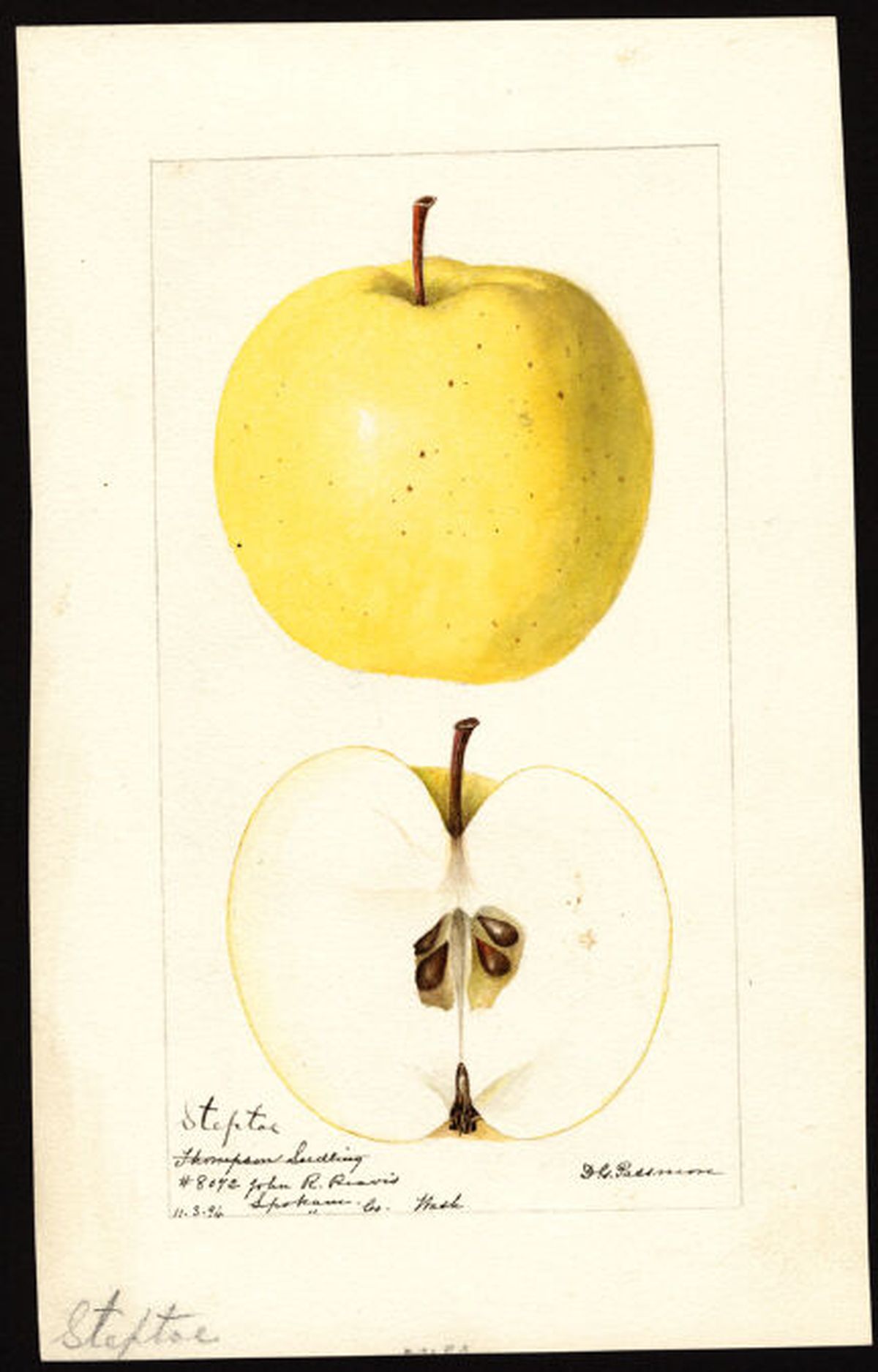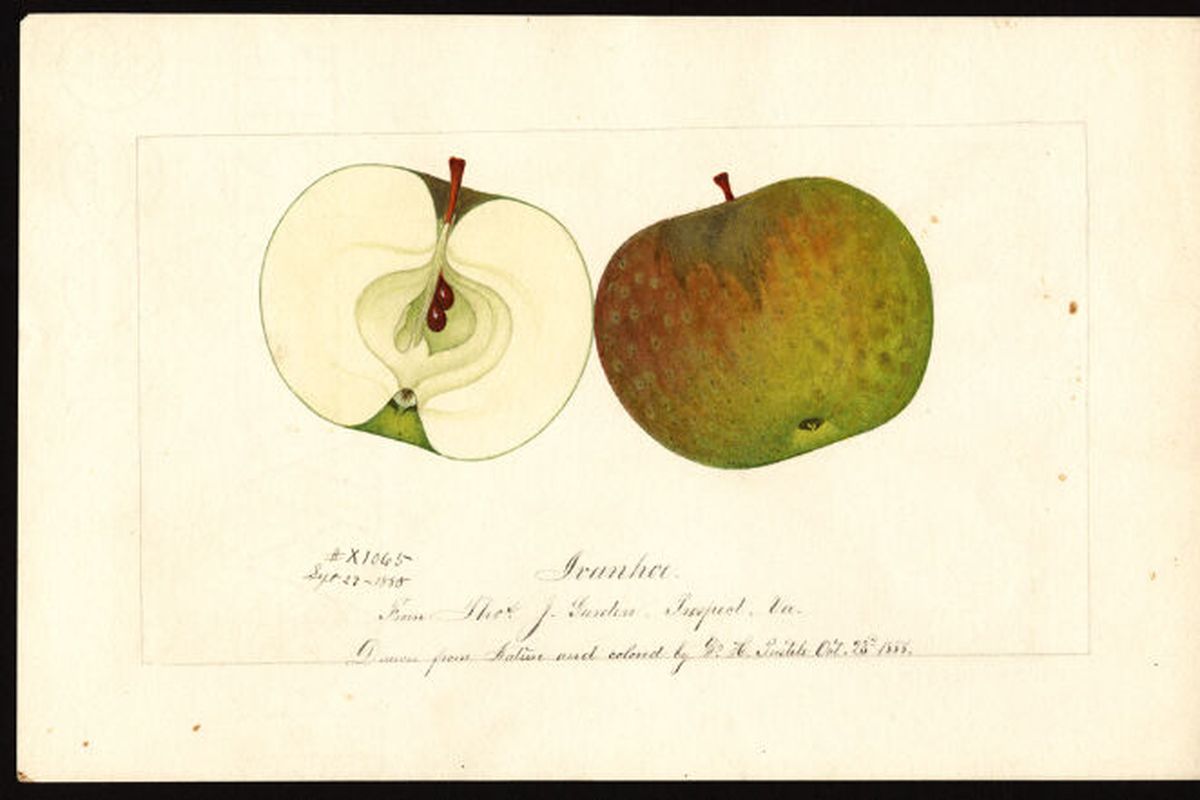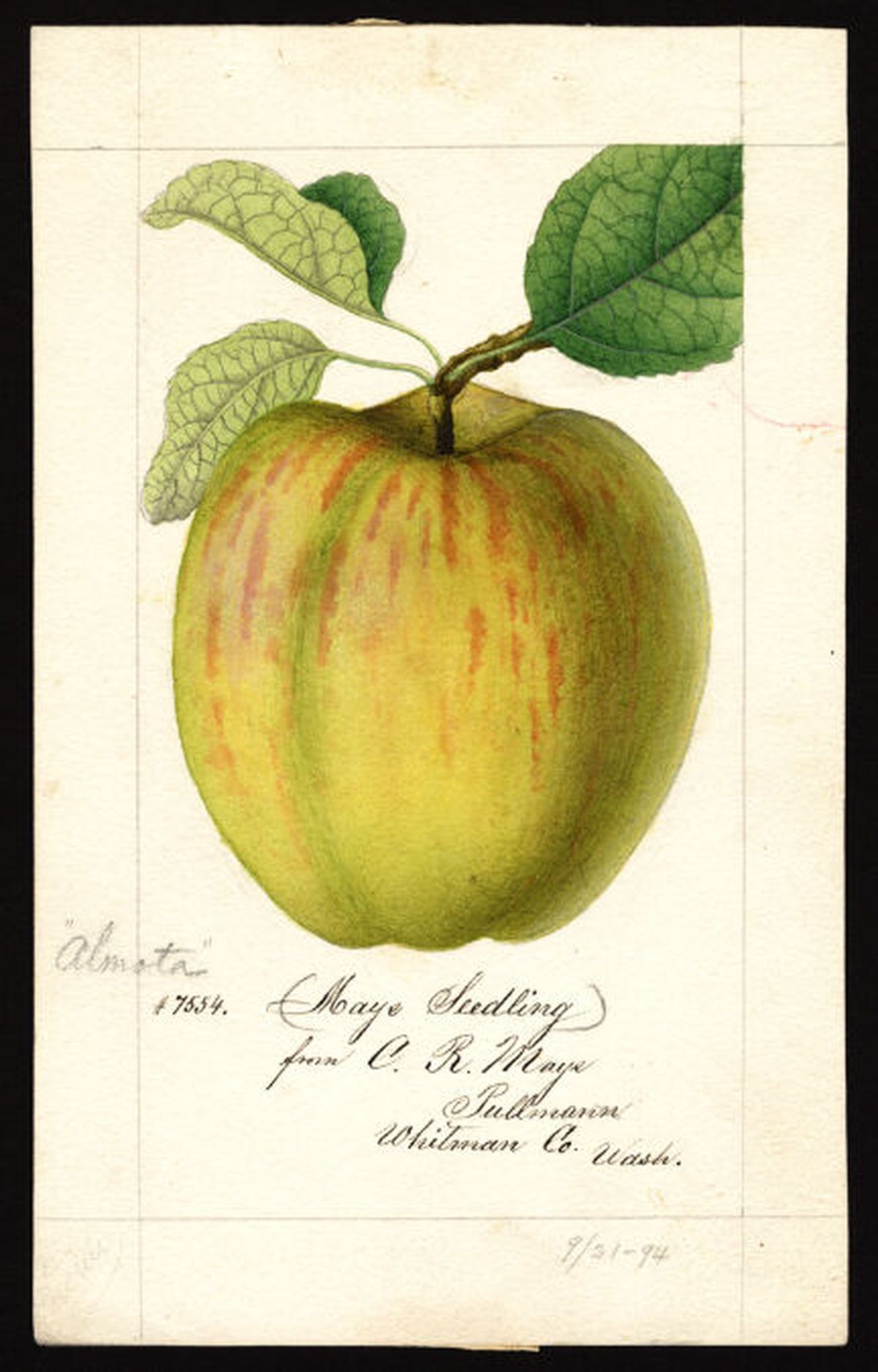How about them apples? Whitman County apple detective rediscovers 7 lost varieties across Inland Northwest
A watercolor painting of an Ivanhoe apple from the U.S. Department of Agriculture Pomological Watercolor Collection. Rare and Special Collections, National Agricultural Library, Beltsville, Maryland 20705. (Courtesy of the U.S. Department of Agriculture)
David Benscoter wouldn’t be surprised if some types of apples recently rediscovered in parts of the Inland Northwest did not exist anywhere else on Earth.
The founder of the Lost Apple Project, Benscoter leads a preservation mission in partnership with the Whitman County Historical Society to identify and regrow apple varieties once thought extinct. In 2014, the 66-year-old retired federal investigator rediscovered the long-lost Nero variety of apples in a pioneer orchard at Steptoe Butte State Park in Whitman County.
This past fall, the Lost Apple Project found the following lost varieties of apples in parts of Washington, Idaho or Oregon: the Almota, Carlough, Eper, Iowa Flat, Ivanhoe, Kay and Steptoe.
Their origins are mostly connected with two early 1900s frontier nurserymen, George Ruedy and Benjamin Buckman, according to the Lost Apple Project.
“The most remarkable thing about the apples that we found this last fall is that they have so many local ties,” Benscoter said. “Usually, we tend to find apples that were at one time very popular … but this time, we found a couple apples known only locally. To be honest, we never thought we would ever come across those apples because they just did not gain much popularity.”
Benscoter has worked for about seven years with the Temperate Orchard Conservancy in Molalla, Oregon, to identify 29 missing apple varieties. He said he “really sincerely” doubts there are any other Steptoe or Almota apples anywhere.
“I come across a lot of apples where I say, ‘Hey, I have never seen that before,’ and I get excited,” said Benscoter, who lives in Chattaroy. “A red apple sometimes is a red apple, but then you come across some – Almota is definitely one of those - it’s not like any apple that I’ve seen before.”
Now more than 20 members strong across Washington, Oregon and Idaho, the Lost Apple Project spent more than 1,000 hours collectively last year searching for lost apples. The program’s finds have made national headlines, appearing in publications such as the New York Times.
Benscoter said he receives emailed tips from all over the United States on the location of potentially lost apples. He said program volunteers typically have better luck when searching homestead orchards rooted in American frontier history.
Volunteers then go out to bag a few apples from the location and send them to the Temperate Orchard Conservancy for identification. In 2017, a total of 200 apple varieties sent for testing resulted in five newly rediscovered apple types.
Apples are unusual in that trees grown from apple seeds will almost certainly produce a different type than the parent fruit, according to the Iowa State University Extension and Outreach. Preserving the lost apples, then, has involved a process of grafting a branch, called a scion, from the orchard onto a rootstock.
With the seven new varieties of apples confirmed, apple trees were immediately grafted and planted at the Temperate Orchard Conservancy to preserve them, according to the organizations. Later on, scions and trees will be available to the public through the conservancy and the Lost Apple Project.
To reach Benscoter about a potentially lost apple variety, email him at dbens23@gmail.com.





